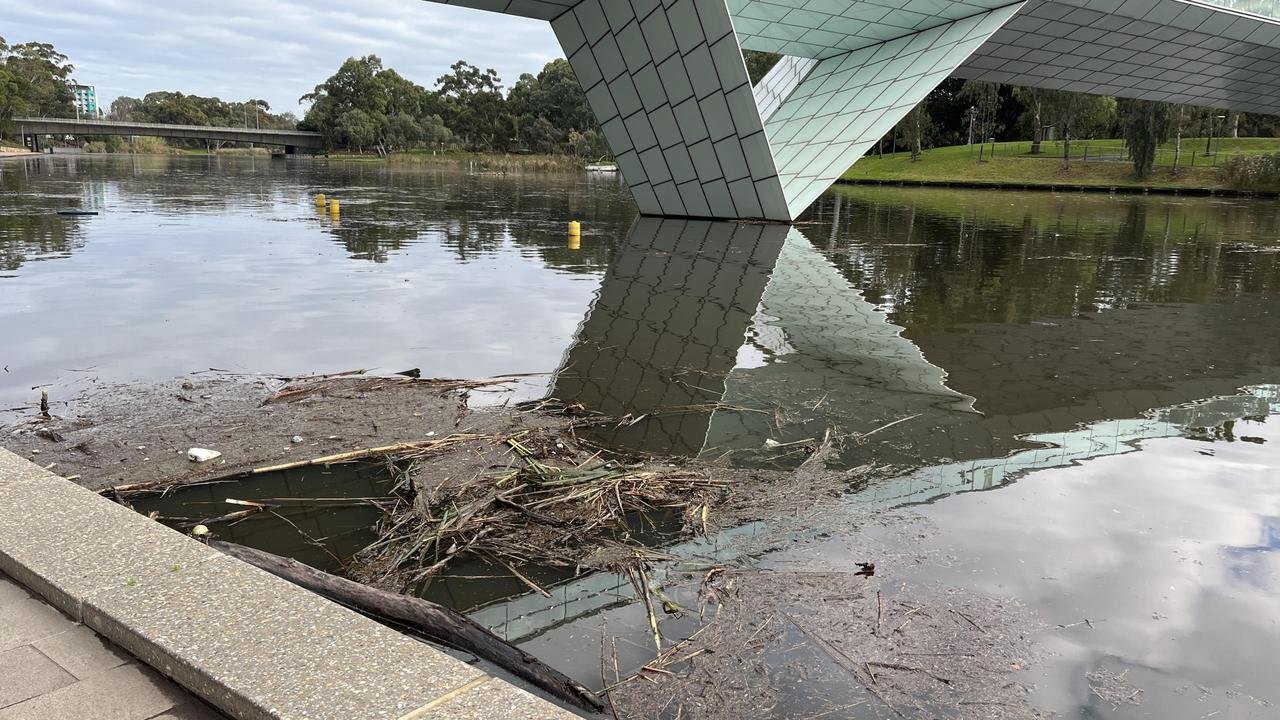by Carla Caruso
The image above isn’t the kind you’d see on a postcard celebrating your city.
Instead, it’s a picture by Instagrammer Adelaide Writer, which we reposted earlier this month – and which garnered a strong reaction.
Along with posting the photo, Adelaide Writer wrote: “At the time of settlement in 1836, Karrawirra Parri [River Torrens] was crystal clear. Now it is polluted and home to introduced species of fish.
“The [boat] sculptures by Shaun Kirby – Talking Our Way Home – also need cleaning and repair.
“This part of the river used to feature a fountain commemorating a visit by Queen Elizabeth II. A plaque nearby still remains but the fountain hasn't been seen for years.
“Plenty of work needed in this part of Tarntanya Wama (Park 26), City of Adelaide.”
The Advertiser also shared this image, advising that the Adelaide City Council have enlisted a contractor with an excavator to remove the debris. (** Subscriber link ** to article.)
Reactions from followers on social media to our reposting included “that is a disgrace; I used to swim in there 40 years ago” and “the fountain [once] kept the water moving” and “what a mess, that is very sad to see”.
To get to the bottom of things, we put a few questions to Tammy Partridge (pictured), the urban water team leader at the government-run Green Adelaide. Here’s what she had to say.
Hi, Tammy. Is it usual for the river to look so polluted at this time of year?
The River Torrens / Karrawirra Pari winds through the heart of Adelaide and is fed by stormwater from the urban environment – this means that when there is heavy rain, stormwater washes rubbish and other pollutants into the system.
These pollutants – which include dog poo, pesticides, fertilisers, soaps, leaf litter, household cleaners and general rubbish – are swept off streets, footpaths, and other paved areas, all through our suburbs, into the river.
The relevant local councils do undertake regular clean-ups in the river, particularly during high-flow times. However, occurrences of pollution are often unavoidable due to the timing of rainfall and clean-up events.
What things are being done to counteract such pollution?
In an effort to reduce the amount of litter and organic matter entering the river, Green Adelaide and local councils operate an extensive network of ‘gross pollutant traps’ – also known as trash racks – across waterways throughout the River Torrens catchment. These are structures with nets that trap rubbish and let the water pass through.
Trash racks are often underground in stormwater drains or, more visually, as nets. Examples of the net traps can be seen on First Creek at the Botanic Gardens [Park 11], and across Fourth Creek, just before it enters the River Torrens / Karrawirra Pari.
We also collect rubbish with floating booms over waterways and purpose-built sedimentation basins, which collect all the dirt that comes out of the rivers. Each year, these trash racks collect enough leaves, twigs, sediment and rubbish to cover the playing field at Adelaide Oval.
Trash racks, like this one at First Creek, stop rubbish from entering our waterways. Photo: Green Adelaide.
Stopping pollution before it reaches our waterways is the goal, and everyone can play a part in this.
An easy way to help is to keep paved surfaces pollutant-free. Picking up rubbish on the street and in parks, raking up leaf litter and placing it in the organics bin, and choosing local native species for your garden (which naturally filter water and shed less leaves) are all ways to help keep our waterways clean.
To improve the health of the river, we have collaborated with local councils, government agencies and the community on a range of projects over the last 20 years, both within the river corridor and across the broader catchment.
For example, the River Torrens Recovery project has spent over a million dollars removing woody weeds and the pest fish species, carp, while also revegetating the banks of the river. This project is an ongoing collaborative effort.
Continued removal of weeds and revegetation with native species along the River Torrens / Karrawirra Pari also helps purify water and provide habitat for native animals.
Where there is more vegetation, you are likely to see more leaf litter make its way downstream. While this might make the river look messy, this vegetation actually indicates a healthier river system.
Green Adelaide's bold vision to reintroduce platypus to the River Torrens / Karrawirra Pari is one step closer to becoming a reality, with a peer-reviewed study showing positive signs for its return. Photo: Green Adelaide.
We know there’s been a scoping study into reintroducing the platypus at the river. Would such pollution need to be cleaned up before the species could return?
Despite being an urban river and the pressures associated with this, many aspects of the river are surprisingly healthy. Regular fish monitoring by Green Adelaide, along the length of the river from the outlet upstream to Gumeracha, has shown self-sustaining populations of rare native fish such as freshwater catfish, lampreys and eels.
The abundance of native fish is likely to be supported by extensive catchment works, including the creation of wetlands on First, Second and Fourth Creeks, biofilters on Second and Third Creeks, and channel naturalisation at Breakout Creek (with Stage 3 currently under construction).
Our preliminary peer-reviewed scoping study showed that habitat quality is favourable for the release of platypus into the River Torrens / Karrawirra Pari, but we will continue to rehabilitate [the river] alongside our partners and the community.
Pollution after recent rainfall at the River Torrens / Karrawirra Parri. Photo: The Advertiser.








